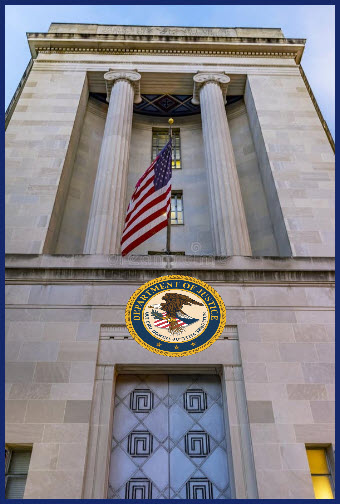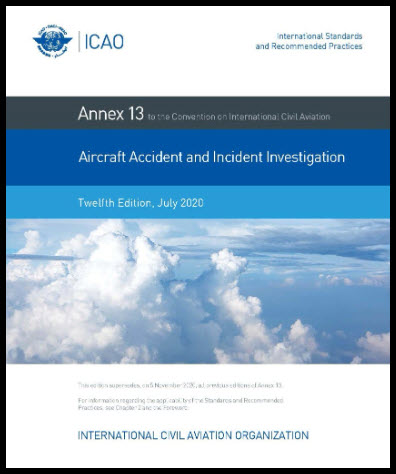Justice and Jail for Boeing vs. NTSB probable cause?

The Department of Justice (DoJ) has announced that it had initiated a CRIMINAL INVESTIGATION “WHETHER THE [Alaska Airlines Boeing 737 Max] PANEL BLOWOUT VIOLATED TERMS OF A 2021 SETTLEMENT that let Boeing avoid prosecution for allegedly misleading regulators who certified the 737 Max.” The charge traces to the terms to which Boeing agreed to close a Justice review of the Max 8 mess. Typically, these compromises are designed to defer immediate sanctions by placing a predetermined penalty by the company if it fails to meet certain specified requirements.
The current facts involve the design and implementation of quality control procedures for installing a door provided by a subcontractor, Spirit Aerosystems by Boeing on a Boeing Max. The NTSB is charged with determining the probable cause for this incident and which includes:
The Board’s assessment of Spirit will likely include review of Spirit’s design of the plug, its instructions for assembling the product, the QA standards for determining its airworthiness, the paperwork supporting that safety inspection and the person(s) at the Spirit facility who signed off on the safety of the plug.
The Board’s assessment of Boeing will likely include review of Boeing’s design of the plug[1], the QA steps for receiving the Spirit product, its instructions for assembling the product, the QA standards [2] for determining its airworthiness, the paperwork [3] supporting that safety inspection and the person(s) at Boeing who signed off on the safety of the plug’s installation.
Now that the criminal case has been announced, counsel(s) for the Spirit and Boeing folks involved will advise their clients to assert the privilege. What would ordinarily have been learned from this analysis, likely will not be determined. Procedures and People who erred in this specific situation will not receive the benefit of the NTSB expert judgment. The management, NEW, of both companies will be forced to GUESS what needs to be fixed. Lessons as to inadequate standards or overburden of those responsible steps are the value of an open NTSB examination. Remedial actions, properly implemented, should reduce the risk of repetition.
The public and the DOJ prosecutors seek JUSTICE, and the announced investigation is their means to that end. If there were individuals who failed to meet their duties and/or if the existing airworthiness processes were deficient, criminal sanctions are this process’ goal.
Below are 6 articles on this subject: 1-3 are statements by (1) the head of the Flight Safety Foundation, (2) opinions by knowledgeable aviation advocates and (3) is an academic quantification of the industry’s and the public’s views of criminalization. These papers detail their support for the importance of an NTSB investigation versus the value of criminal punishment.
Number 4 is an AP article about the FBI has told passengers on the Alaska Airlines Boeing 737 Max that lost a door-plug panel in midflight THAT THEY MIGHT BE VICTIMS OF A CRIME. This communication and related support are required by the Victims’ Rights and Restitution Act (VRRA), and the Crime Victims’ Rights Act (CVRA)—Number 5 explains the FBI’s procedures for agents carrying out their VRRA/CVRA duties. Number 6 is the Attorney General’s procedures carrying out their VRRA/CVRA duties.
The test for determining the victims is whether a “person has suffered direct physical, emotional, or pecuniary harm as a result of the COMMISSION OF A CRIME.” DoJ must be claiming that the failure to adhere to the settlement is a crime or is its theory is that the airworthiness representation to the FAA was a false statement to the government, a felony. To prove this airworthiness assertion, DOJ will be interrogating the Spirit and Boeing people implicated. The employees’ counsels will prohibit any answers, perhaps leading to immunity grants. Usually that track goes through those whom DoJ are less blameworthy to get to their predetermined target(s). Whatever Justice does preempts the NTSB search for PROBABLE CAUSE.
The appropriate time to deliver the VRRA/CVRA letters is interesting. The FBI document (Number 5) makes the following recommendation:
“most of these rights apply AFTER CHARGES HAVE BEEN FILED BY A U.S. ATTORNEY’S OFFICE.”
The AG (Number 6) is a higher authority and a more recent statement:
“Timing: Department responsibilities to crime victims begin as soon as possible after the detection of a crime at which they may be undertaken without interfering in the investigation. See 34 U.S.C. § 20141(b). Generally, this point in time is defined by the opening of a criminal investigation.”
Why the change?
HOWEVER, even FSF recognizes that
“… IN SOME CASES, RESULT IN CIVIL OR CRIMINAL LEGAL PROCEEDINGS. EVIDENCE OF WILLFUL ACTS OF MISCONDUCT, INTENTIONAL FAILURES TO FOLLOW PROCEDURES, OR EGREGIOUS RECKLESS BEHAVIOR SHOULD RESULT IN REGULATORY ENFORCEMENT ACTION OR, IN SOME CASES, CRIMINAL PROSECUTION.”
Boeing agreed to the deferred sanction agreement in the Max 8 MCAS case, maybe that exceptional agreement/precedent followed by another egregious incident qualifies as a willful act, misconduct or intentional failure to follow procedures?

++++++++++++++++++
by Dr. Hassan Shahidi | President and CEO | May 17, 2019

In March, a court in Switzerland found an air traffic controller guilty of negligent disruption of public transport in relation to an operational incident at Zurich Airport six-and-a-half years ago. No one was injured in the incident. The conviction marks the third time in a year that Swiss prosecutors have won a conviction against a controller for an operational incident.
The Swiss cases and similar recent events represent an UPTICK IN LEGAL ACTIONS that is effectively criminalizing aviation incidents and accidents. THIS CAN HAVE A CHILLING EFFECT ON THE FLOW OF CRUCIAL SAFETY INFORMATION AND A LONG-TERM ADVERSE IMPACT ON SAFETY. Holding controllers, pilots and aviation maintenance technicians criminally liable for honest mistakes ultimately threatens the safety of the traveling public.

The sole OBJECTIVE OF AN AIRCRAFT ACCIDENT OR INCIDENT INVESTIGATION IS THE PREVENTION OF FUTURE ACCIDENTS AND INCIDENTS. As the International Civil Aviation Organization (ICAO) plainly states in Annex 13, Aircraft Accident and Incident Investigation, and in accompanying materials, “it IS NOT THE PURPOSE OF AN INVESTIGATION TO APPORTION BLAME OR LIABILITY.”
Flight Safety Foundation has long held that the safety of the traveling public and the continued improvement of the aviation industry’s safety performance depend on encouraging a CLIMATE OF OPENNESS AND COOPERATION following accidents and serious incidents. It is that climate of openness and cooperation that allows investigators to determine the probable and contributory causes of accidents and incidents from which risk mitigation strategies and lessons learned are developed.
As the Foundation said in its 2006 Joint Resolution on the criminalization of aviation accidents, the paramount consideration in an aviation accident investigation should be to determine probable cause and contributing factors in the accident, NOT TO CRIMINALLY PUNISH FLIGHT CREWS, MAINTENANCE EMPLOYEES, MANAGEMENT OFFICIALS AND EXECUTIVES OF AIRLINES OR MANUFACTURERS, REGULATORY OFFICIALS OR AIR TRAFFIC CONTROLLERS. By identifying the “what” and the “why” of an accident, aviation safety professionals will be better equipped to address accident prevention in the future.
It has been said that the aviation industry is the most labor-intensive safety operation in the world. Human errors are going to happen. The redundancies and mitigations in our current processes have helped to trap these hazards so that in commercial aviation, there are fewer than three accidents per million flight sectors, according to ICAO data. It is imperative that the industry learn from those errors to improve upon this outstanding performance and to reduce the risk that similar accidents might happen again.
The aviation industry has a REMARKABLE SAFETY RECORD due in large part to the willingness of operators and manufacturers to cooperate fully and frankly with investigating authorities. The benefit of gaining accurate information to increase safety standards and reduce recurring accidents outweighs the retributive satisfaction of a criminal prosecution, conviction and punishment. Increasing safety in the aviation industry is a greater benefit than seeking criminal punishment for those “guilty” of human error or tragic mistakes.
THE FOUNDATION UNDERSTANDS THAT IT IS UNREALISTIC TO EXPECT THAT AIRCRAFT ACCIDENTS WILL NOT, IN SOME CASES, RESULT IN CIVIL OR CRIMINAL LEGAL PROCEEDINGS. EVIDENCE OF WILLFUL ACTS OF MISCONDUCT, INTENTIONAL FAILURES TO FOLLOW PROCEDURES, OR EGREGIOUS RECKLESS BEHAVIOR SHOULD RESULT IN REGULATORY ENFORCEMENT ACTION OR, IN SOME CASES, CRIMINAL PROSECUTION.
But all parties involved must keep in mind that criminal investigations and other judicial actions may hinder the critical information-gathering portions of an accident investigation and subsequently interfere with the successful prevention of future accidents and the mitigation of risk.
As the Foundation did more than a decade ago, when it became concerned with a trend to criminalize acts and omissions of parties involved in accidents and incidents, we urge states to exercise restraint and adopt or adhere to strict guidelines before officials initiate criminal investigations or bring criminal prosecutions in the wake of accidents.
+++++++++++++++++++++
- Opinions expressed by two aviation safety lawyers
Criminalization of Aviation Accidents, by Kenneth Quinn.
Criminalization of Aviation Accidents by JAMES T. CROUSE on DECEMBER 10, 2010
++++++++++++++++++++++++
3. A quantitative investigation on criminalization of airline pilots: Consumer and pilot perspectives
Author links open overlay panel Scott R. Winter a, Stephen Rice a, Tyler Spence a, Nicola M. O’Toole a, Gajapriya Tamilselvan b, Bradley S. Baugh a, Urara Takano a, Madhur Gupta a, Drishti Valecha a, Mattie N. Milner a, Antonio I. Cortés a
https://doi.org/10.1016/j.ssci.2020.104904Get rights and content
long academic paper
Abstract
The foundation of many safety programs within the aviation industry relies on voluntary safety reporting. The premise of these programs is for participants (usually all members of the organization) to feel comfortable submitting voluntary safety reports whenever there are accidents, incidents, or a safety hazard is perceived.
However, around the world, the last decade has seen a rise in the calls for the criminalization of those who are perceived to be responsible for accidents. This trend is a growing concern for those in the safety profession AS THE SHORT-TERM DEMAND FOR PERCEIVED JUSTICE MAY BE A SIGNIFICANT DETRIMENT TO LONG-TERM SAFETY GOALS. Flight crewmembers fearing criminal prosecution for unintentional actions may severely reduce the number of voluntary reports they are willing to submit.
The purpose of these two studies was to EXAMINE PERCEPTIONS of both consumers and pilots to determine their level of agreement with the criminalization of pilots in a series of cases. Using a sample of 3,000 participants across two studies, we found significant differences in attitudes toward criminalization between consumers and pilots, along with a significant interaction. In Study 1, pilots indicated less support for criminalization in all cases compared to consumers, and consumers were less supportive of criminalization in cases where it appeared the circumstances were beyond the pilot’s control. In Study 2, pilots provided additional measures on two select cases to include the level of severity and willingness to file voluntary safety reports on themselves and others.
+++++++++++++++++
4. FBI tells passengers on the Alaska Airlines flight that lost a panel they might be crime victims

Alaska Airlines aircraft sit in the airline’s hangar at Seattle-Tacoma International Airport Wednesday, Jan. 10, 2024, in SeaTac, Wash. Boeing has acknowledged in a letter to Congress that it cannot find records for work done on a door panel that blew out on an Alaska Airlines flight over Oregon two months ago. Ziad Ojakli, Boeing executive vice president and chief government lobbyist, wrote to Sen. Maria Cantwell on Friday, March 8 saying, “We have looked extensively and have not found any such documentation.” (AP Photo/Lindsey Wasson)
BY DAVID KOENIG
Updated 7:29 PM EDT, March 22, 2024
The FBI HAS TOLD PASSENGERS on the Alaska Airlines Boeing 737 Max that lost a door-plug panel in midflight THAT THEY MIGHT BE VICTIMS OF A CRIME.
“I’m contacting you because we have identified you as a possible victim of a crime,” a victim specialist from the federal agency’s Seattle office wrote in the letters, which passengers received this week. “This case is CURRENTLY UNDER INVESTIGATION BY THE FBI.”
The plane was flying 16,000 feet (4,800 meters) over Oregon on Jan. 5 when the panel blew out, leaving a gaping hole in the side. The rapid loss of cabin pressure caused oxygen masks to drop from the ceiling, and suction as air rushed from the hole exerted force on people inside the plane.
Pilots were able to land safely in Portland, Oregon, and none of the 171 passengers and six crew members were seriously injured. Investigators say it appears that four bolts used to help secure the panel were missing after the plane was worked on at a Boeing factory in Renton, Washington.
Published reports and government officials have said the U.S. Justice Department has opened a criminal investigation into WHETHER THE PANEL BLOWOUT VIOLATED TERMS OF A 2021 SETTLEMENT that let Boeing avoid prosecution for allegedly misleading regulators who certified the 737 Max.
The settlement followed two crashes of Boeing Max jets in 2018 and 2019 that killed a total of 346 people.
Mark Lindquist, a lawyer representing some of the passengers on the Alaska Airlines flight in a lawsuit against Boeing, shared the FBI letter with The Associated Press. The notice gave recipients an email address, a phone number, a case number and a personal identification number so they can share questions and concerns.
“A criminal investigation can be a lengthy undertaking, and, for several reasons, we cannot tell you about its progress at this time. A victim of a federal crime is entitled to receive certain services,” the letter stated.
The FBI letter did not name Boeing, which declined to comment Friday. Alaska Airlines said, “We are fully cooperating and do not believe we are a target of the investigation.”
The National Transportation Safety Board, the Federal Aviation Administration and the Justice Department are conducting separate investigations of Boeing.
Lindquist said he and his clients welcome the Justice Department’s investigation.
“We want accountability, answers, and safer planes,” he said. “THE DOJ AND THE FBI BRING SIGNIFICANT LEVERAGE and resources that I’m confident will help our case and help the flying public as well.”
The decision to designate the Alaska passengers as potential crime victims is a turnaround for the Justice Department, which a few years ago argued that families of passengers who died in the Max crashes did not meet the legal definition of crime victims.
A federal judge in Texas, however, ruled that the families did meet the standard. He said that under federal law, the Justice Department should have told them about secret negotiations with Boeing that produced the 2021 settlement.
Robert Clifford, a Chicago lawyer representing some of those families, said his clients are grateful that the Justice Department is following a different policy with the Alaska passengers.
“They are thankful that it is happening,” Clifford said. “To be clear: They are not thanking DOJ for doing the right thing. They were forced to do the right thing.”
++++++++++++++++++++++++
5. Rights of Federal Crime Victims
From FBI website 03/26/2024
The victims rights movement of the 1970s and 1980s resulted in the creation of many programs designed to assist victims of crime and in the passage of laws at the local, state, and federal level establishing certain rights for victims. These rights and services vary somewhat from state-to-state, depending upon the laws of each state and available resources. State and local authorities investigate crimes which are violations of state criminal laws. Most crimes investigated by the FBI involve violations of the United States Federal Criminal Code. Victims of federal crimes are entitled to certain rights and services according to federal law.
…
most of these rights apply AFTER CHARGES HAVE BEEN FILED BY A U.S. ATTORNEY’S OFFICE.
++++++++++++++++++++++++
6.

A 95 page updated statement of the Attorney General’s guidance in applying the Victims’ Rights and Restitution Act (VRRA), 34 U.S.C. § 20141 and the Crime Victims’ Rights Act (CVRA), 18 U.S.C. § 3771.
These revised Guidelines reflect statutory updates, case law developments, the impact of technology, and lessons the Department has learned working with victims and witnesses. This resource prioritizes a victim[1]centered, trauma-informed, and culturally sensitive approach. It provides further guidance on how best to assist vulnerable victims.
p.9
The rules of professional conduct generally prohibit ex parte contact with represented persons on the subject on which they are represented. However, depending on the facts of a specific situation, a Department attorney may be permitted to have ex parte contact with a represented victim for a valid investigative purpose or to comply with statutory duties. See Model Rules of Prof’l Conduct R. 4.2
p.13
Timing: Department responsibilities to crime victims begin as soon as possible after the detection of a crime at which they may be undertaken without interfering in the investigation. See 34 U.S.C. § 20141(b). Generally, this point in time is defined by the opening of a criminal investigation. In some situations, an investigation may be initiated at a point in time when it is still unclear whether a crime was committed. In those situations, personnel should follow the guidance of Article II.A
p.15
Direct and Proximate Harm Determining whether a person or entity meets the harm element of the legal definition of victim under the VRRA or CVRA requires a fact-specific analysis of both the nature of the harm allegedly suffered by the person or entity and the crime that is alleged to have caused the harm. To qualify as a victim, both statutes require the ALLEGED HARM MUST BE A DIRECT CONSEQUENCE OF THE CRIME; that is, the harm must generally be a “but for” consequence of the conduct that constitutes the crime or offense, specifically the crime or offense under investigation, that has been charged, or for which there has been a conviction, depending on the stage of the criminal justice process. Intervening or contributing actions of the person or entity suffering harm, or of a third party, may preclude a determination that the crime or offense charged directly caused the harm.
+++++++++++++++++++++
[1] For example, whether the plug anchored by these bolts can sustain pressurization.
[2] i.e. the torque needed to secure the bolts.
[3] It has been reported that Boeing cannot find these materials.
+++++++++++++++++